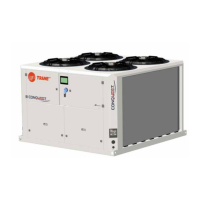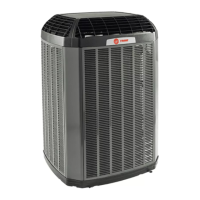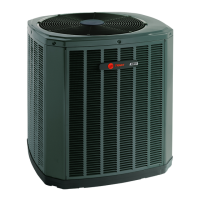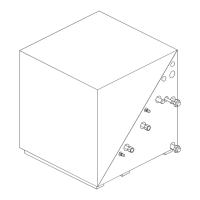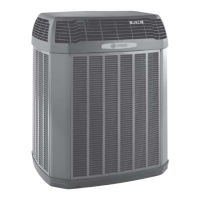Electrical connections
Electrical power supply
The mains power supply characteristics have to match the unit’s absorption. The mains power supply tension must
correspond to the nominal value ± 10%, with a maximum difference between the phases of 3%.
Power connections
Protect the unit electric box power supply circuit with protection devices (not included in the supplied equipment)
Connect the line terminals with a three-core cable of a section, which is appropriate to the machine absorption.
The switch and the fuses like all the power connections must comply with the regulations in force.
Unbalance between the supply tension phases
Do not run the electrical motors when the voltage unbalance between the phases is more than 3%.
Use the following formula to check:
% Voltage unbalance = Max voltage deviation from average * 100
Voltage average
Important! If the mains voltage has an unbalance of above 3%, contact the company which distributes the electrical
energy. If the unit functions with a unit voltage unbalance between the phases of above 3% the warranty is invalid.
Evaluation of harmonic components and total harmonic distortion THD value
The bridge rectifier of an inverter requires from the mains a current that is not purely sinusoidal. In fact, due to the pres-
ence of the diodes (non-linear components), the current absorbed by a bridge rectifier presents frequency components
higher than the mains frequency. These components are called harmonics; in case of power supply at 50 Hz is called the
fundamental harmonic component at 50 Hz, the second harmonic is the component to 100 Hz, the third harmonic is the
component at 150 Hz and so on (in the case of power 60Hz to the fundamental component is at 60Hz, the second har-
monic is 120Hz, 180Hz in the third and so on).
Since the bridge rectifier sees in front of him one stage direct current, the current drawn is practically, in phase with the
voltage. However it is no longer true the relationship between the classical electrical quantities: because the higher
harmonics to the fundamental components do not contribute to the active power. We must therefore define different
sizes:
Displacement Power Factor (power factor lag)
Power Factor (total power factor)
The Power Factor takes into account both the phase shift that the harmonic content, expressed as the ratio between the
fundamental component of the current I1, and the overall RMS value. It expresses how much of braids of the input cur-
rent is converted into active power. It is worth noting that, in the absence of inverters or devices electronics in general,
DPF and PF are the same. Moreover, the majority of entities in the electric energy distribution take account only of the
DPF, as the harmonic content is not measured, but only the absorption of active and reactive energy.
Another index of measurement of harmonics fed into the grid is given by THDi THD (Total Harmonic Distortion) so de-
fined:
